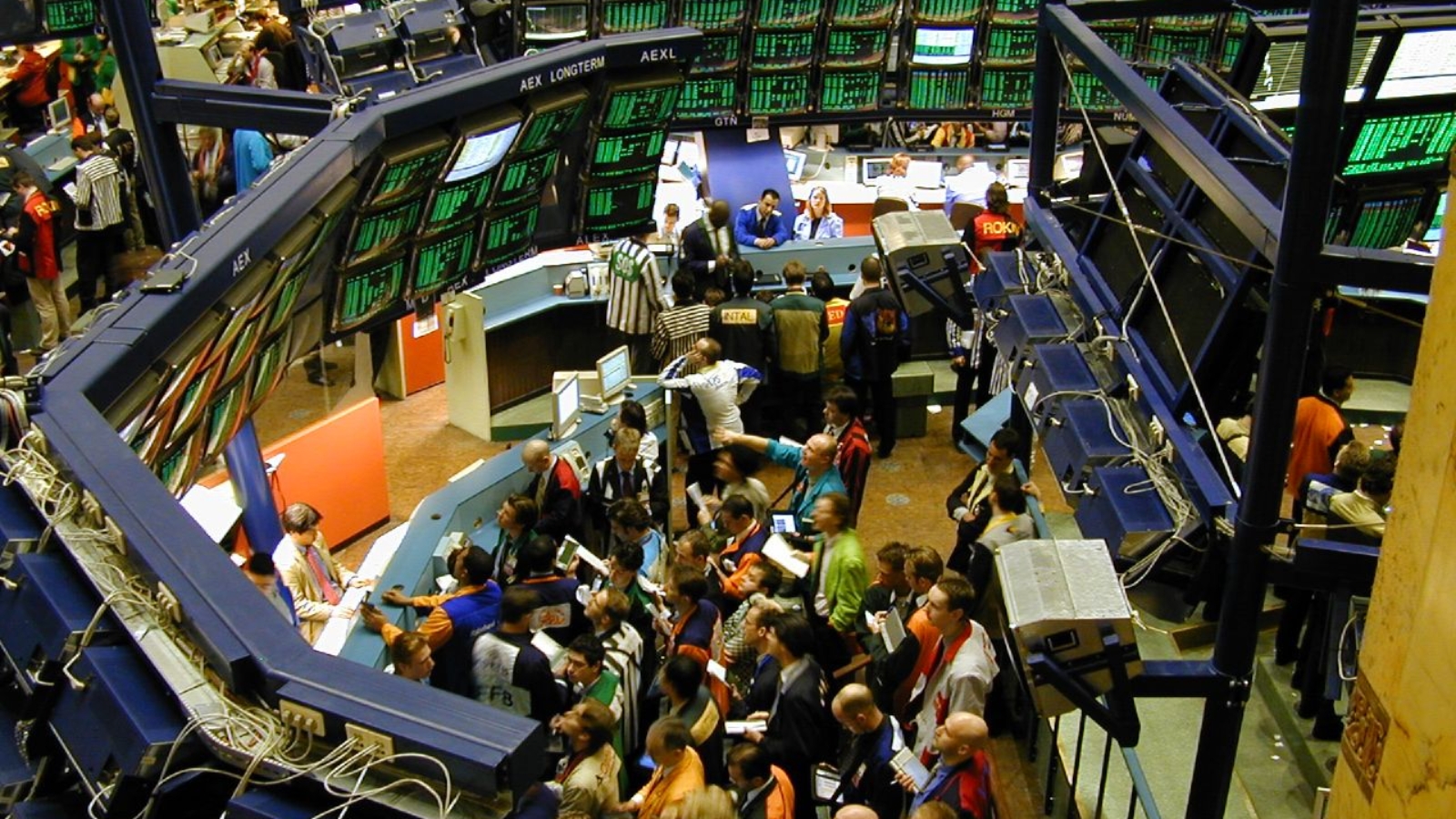By James H. Nolt
In recent weeks, something happened that has probably never before happened in history. Various European government bonds were trading with negative nominal yields. Just to impress you with how weird this sounds, a negative yield is the equivalent of paying someone to borrow money from you. “Take my money, please!”
Most economic models exclude this by assuming interest rates can never be less than zero. When I was learning economics, we were told this is nonsensical. Now, some people are even calling it the “new normal.” Well, no, it is not normal. And indeed this week, it appears that bond prices are down again, raising yields back into a low positive range. Yet even this brief flirtation with negative yields should induce us to ponder what is happening these days.
This dip into negative yields is indicative of a broad move in recent years toward extraordinarily low interest rates worldwide at a time when debt levels are extremely high. During normal business cycles, when debt levels start to climb after a run of bullish debt creation, interest rates typically start to rise at some point because of the simple fact that creditors begin to worry that with so much credit outstanding investors are leveraging too much to gain the profits they need to cover their debt costs. Raising the interest rate, the cost of credit, should be a signal to bulls to scale back, slow down, and exercise caution.
At least, that is normally what should happen when debt, both public and private, is as high in relation to the overall economy as it is today. But what normally does happen in times like these is not happening this time. Why not?
There are several reasons often given, but let’s start with one popularized by Former Fed Chairman Ben Bernanke, that for some years now there has existed a “global savings glut.” It used to be, for example, that China was praised for having an extremely high savings rate, leading, it is said, to its high growth rate. But now China, Japan, and oil rich Arabs are being blamed for saving too much. Even wealthy consumers countries in Europe and North America, long criticized for spending too lavishly, are now blamed for being too frugal, saving too much. Corporations may be adding to the glut too.
Although they do not declaim this, it is extraordinarily self-critical for mainstream economists like Bernanke to evoke a savings glut. High savings and low interest rates should be an enormous stimulus to productive investment and growth, according to standard economic models and conventional thinking. Thus currently, European central banks, worried about sluggish growth, are buying trillions of dollars of government bonds from private investors in an effort misnamed “quantitative easing,” which tends to raise bond prices and lower yields even though they are already at record lows. If rates are already at all-time historic lows, why are economies still sluggish?
Worldwide, the pool of investable capital is huge, this is the “savings glut.” It would be a little more accurate to call it a capital glut. I was at a meeting of investors and bankers in Manhattan last week and the complaint was heard (as I have heard before) that the problem is not lack of funds, but lack of willing borrowers.
In other words, it is not just that the supply of capital is large, but the demand for investing it is insufficient, thus the determination with which creditors are trying to give away capital at zero to negative interest rates. During the Vietnam War, there was a popular saying among peaceniks, “What if they gave a war and nobody came?” What if they tried to lend capital and nobody borrowed? Interest rates would plummet.
I used to tell my students in China that a recession is caused by fear of spending and fear of lending. Fear of spending leads businesses not to want to invest in growth, therefore weak loan demand. Fear of lending occurs when financial institutions, as in 2008, hang onto capital to ensure their own solvency rather than lending it out. Since 2008, many financial institutions have restored their balance sheets so that they might be willing to lend again, but people bullish enough to want to borrow are harder to find.
The real beneficiaries of these extraordinarily low interest rates today are not productive businesses, many of which have sufficient or even excess capacity already for today’s torpid demand; the real beneficiaries are financial traders who are able to fund leveraged investment positions for next to nothing. Since most investment positions today include major doses of derivatives (accounting for the fact that the face value of derivatives contracts globally vastly exceeds the value of all other financial contracts such as stocks, bonds, bills, bank loans, etc.), such low interest rates are primarily financing cheap speculation, financial gambling, not productive investment.
Expanding productive investment implies a long-run bullish belief that future demand will exceed present demand. Derivatives allow short-run bets on price jitters that equally involve bears and bulls, since every derivative contract has two sides: one betting the underlying will go down and the other that it will go up. As more capital gets sucked into short-term derivative plays rather than long-term bullish investment, it is not a good sign that capitalists have confidence in growth. There are always some bulls to be found in the short run since any prices will sometimes turn up, but a worldwide shortage of bullish investors willing to commit to an upturn for years rather than weeks is a worrying sign.
Even in China, the foremost stronghold of bullish investing during recent decades, productive investment is slowing. China’s growth was led especially by two sectors: exports and investment, including real estate development. Travelling around China and visiting factories today, you will find that many export sectors have excessive capacity and real estate is vastly overbuilt and under occupied. It is hard even for the most bullish investor to keep adding capacity to a sector where so much is idle.
China now produces, for example, over half of the world's demand for steel, but if all its steel mills were producing at full tilt, it could produce closer to two-thirds of world demand, and steel prices would plummet. China’s slowdown in steel curbs its demand for Australian iron ore and German steel-making machinery, reinforcing the economic slowdown elsewhere.
Thus we reach a second reason why bond yields might flirt below zero: expectation of global deflation. If prices are going down, then creditors will be paid back with money that is worth more than what they borrowed, so it still might be worthwhile to lend for a nominal return of nothing or even less. But if prices are headed down in a world loaded with debt, this could be an extremely serious problem not seen since the Great Depression of the 1930s and the Long Deflation of the later 19th century. Falling prices means it becomes harder for people, businesses, and governments to pay back debts that are fixed in money terms. More on debt deflation next week.
*****
*****
James H. Nolt is a senior fellow at World Policy Institute and an adjunct associate professor at New York University.
[Photo courtesy of Perpetual Tourist]
